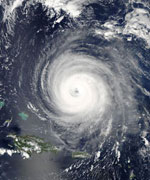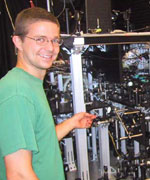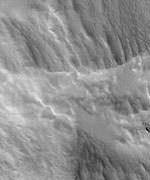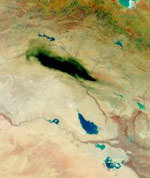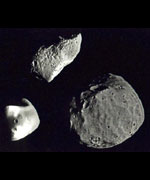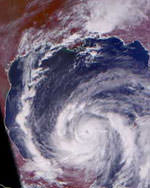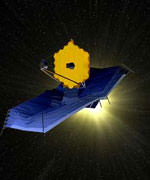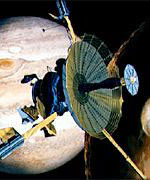
Image credit: NASA/JPL
Time is running out for NASA’s Galileo spacecraft. After eight years of loyal service imaging Jupiter and its moons, NASA controllers have aimed it at the gas giant. On September 21, 2003, Galileo will crash into Jupiter and be destroyed; this will prevent any chance the spacecraft will unintentionally crash into Europa and contaminate the liquid ocean. NASA is planning a series of live press conferences to explain the end of the mission and discuss Galileo’s discoveries.
Following eight years of capturing dramatic images and surprising science from Jupiter and its moons, NASA’s Galileo mission draws to a close September 21 with a plunge into Jupiter’s atmosphere. Following eight years of capturing dramatic images and surprising science from Jupiter and its moons, NASA’s Galileo mission draws to a close September 21 with a plunge into Jupiter’s atmosphere.
NASA has scheduled a Space Science Update (SSU) at 2 p.m. EDT, Wednesday., September 17, in the James E. Webb Auditorium at NASA headquarters, 300 E St. S.W., Washington. Panelists will discuss the historic mission, engineering challenges, science highlights and plans for Galileo’s impact with Jupiter’s atmosphere.
The SSU will be carried live on NASA Television with two-way question-and-answer capability from participating agency centers. NASA TV is broadcast on AMC-9, transponder 9C, C-Band, located at 85 degrees west longitude. The frequency is 3880 MHz. Polarization is vertical, and audio is monaural at 6.80 MHz. Audio of the SSU is available on voice circuit from the Kennedy Space Center at: 321/867-1220.
SSU participants:
# Dr. Colleen Hartman, director, Solar System Exploration Division, NASA Headquarters.
# Dr. Claudia Alexander, Galileo project manager, NASA Jet Propulsion Laboratory (JPL), Pasadena, Calif.
# Dr. Michael J.S. Belton, Team Leader, Galileo Solid State Imaging Team, Emeritus Astronomer, National Optical Astronomy Observatories, Tucson, Ariz.
# Dr. Don Williams, principal investigator, Galileo heavy ion counter, The Johns Hopkins University, Applied Physics Laboratory, Laurel, Md.
# Jim Erickson, Mars Exploration Rover Mission Manager and former Galileo project manager, JPL.
The spacecraft was put on a collision course with Jupiter’s atmosphere to eliminate any chance of impact of the moon Europa, which Galileo discovered is likely to have a subsurface ocean. The team expects the spacecraft to transmit a few hours of science measurements in real time, leading up to impact on Sunday, September 21. The maneuver is necessary, since onboard propellant is nearly depleted. Without propellant, the spacecraft would not be able to point its antenna toward Earth nor adjust its flight path, so controlling the spacecraft would no longer be possible.
From 4:00 to 5:00 p.m. EDT, September 21, JPL will provide live commentary from the mission control room and footage of the countdown clock as Galileo nears its final moments. The televised special will feature two panels. One will include former project managers, and the other former project scientists.
Live satellite interview opportunities with project personnel are available Friday, September 19. To book a time, please contact Jack Dawson at: 818/354-0040.
Launched by the Space Shuttle Atlantis in 1989, the mission produced a string of discoveries while circling Jupiter, the solar system’s largest planet, 34 times. Galileo was the first spacecraft to directly measure Jupiter’s atmosphere with a probe and the first to conduct long-term observations of the Jovian system from orbit.
Galileo found evidence of subsurface liquid layers of salt water on Jupiter’s moons Europa, Ganymede and Callisto, and it detected extraordinary levels of volcanic activity on Io. Galileo was the first spacecraft to fly by an asteroid and the first to discover the moon of an asteroid. Galileo’s prime mission ended six years ago after two years orbiting Jupiter. NASA extended the mission three times to take advantage of Galileo’s unique science capabilities.
The September 17 SSU and September 21 end of mission event will be Web cast live at:
http://www.jpl.nasa.gov/webcast/galileo/
Additional information about the mission and Galileo’s discoveries is available at:
http://galileo.jpl.nasa.gov
For information about NASA on the Internet, visit:
Home Page
Original Source: NASA News Release
